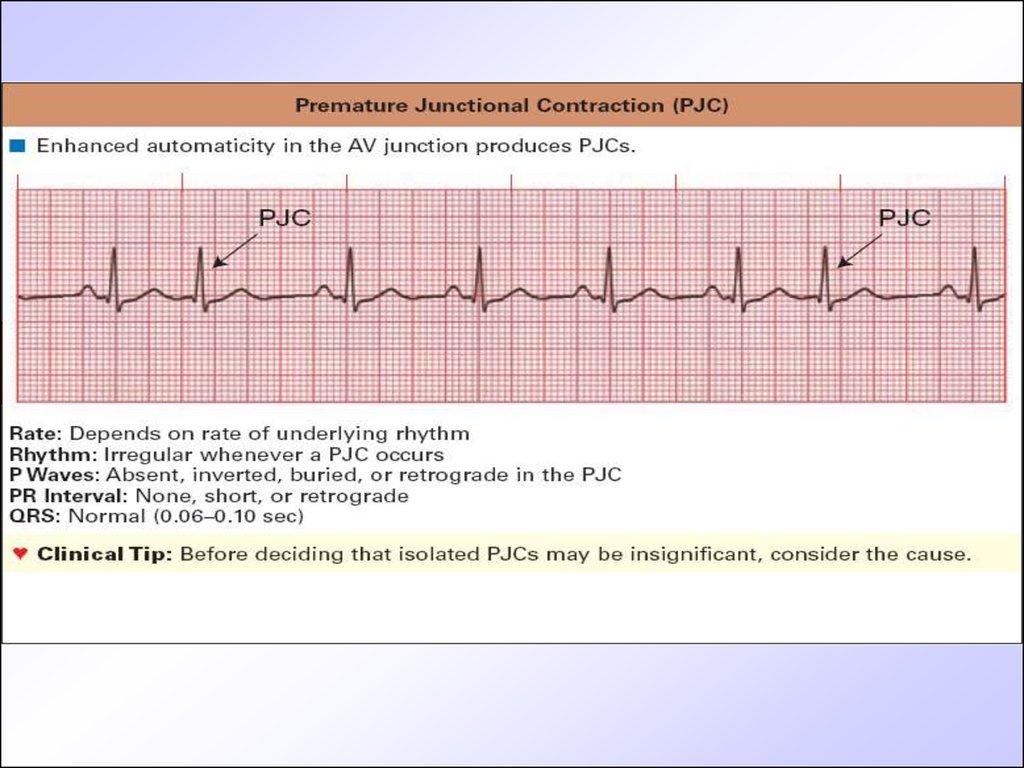Definition of heart rhythm. Understanding Heart Arrhythmias: Causes, Types, and Implications
What are the main types of heart arrhythmias. How do electrical signals control the heart’s pumping action. What factors can lead to abnormal heart rhythms. How do arrhythmias affect the body’s overall function.
The Fundamentals of Heart Rhythm and Arrhythmias
The human heart, a muscular organ slightly larger than a fist, plays a crucial role in pumping blood throughout the body. Its rhythmic contractions are orchestrated by a complex electrical system that ensures proper timing and coordination. However, when this electrical system malfunctions, it can lead to arrhythmias – abnormal heart rhythms that can have significant implications for overall health.
An arrhythmia is defined as any irregularity in the heart’s rate or rhythm. These irregularities can manifest as heartbeats that are too fast (tachycardia), too slow (bradycardia), or erratic. The severity of arrhythmias can vary widely, from brief, harmless episodes to potentially life-threatening conditions that severely impair the heart’s ability to pump blood effectively.
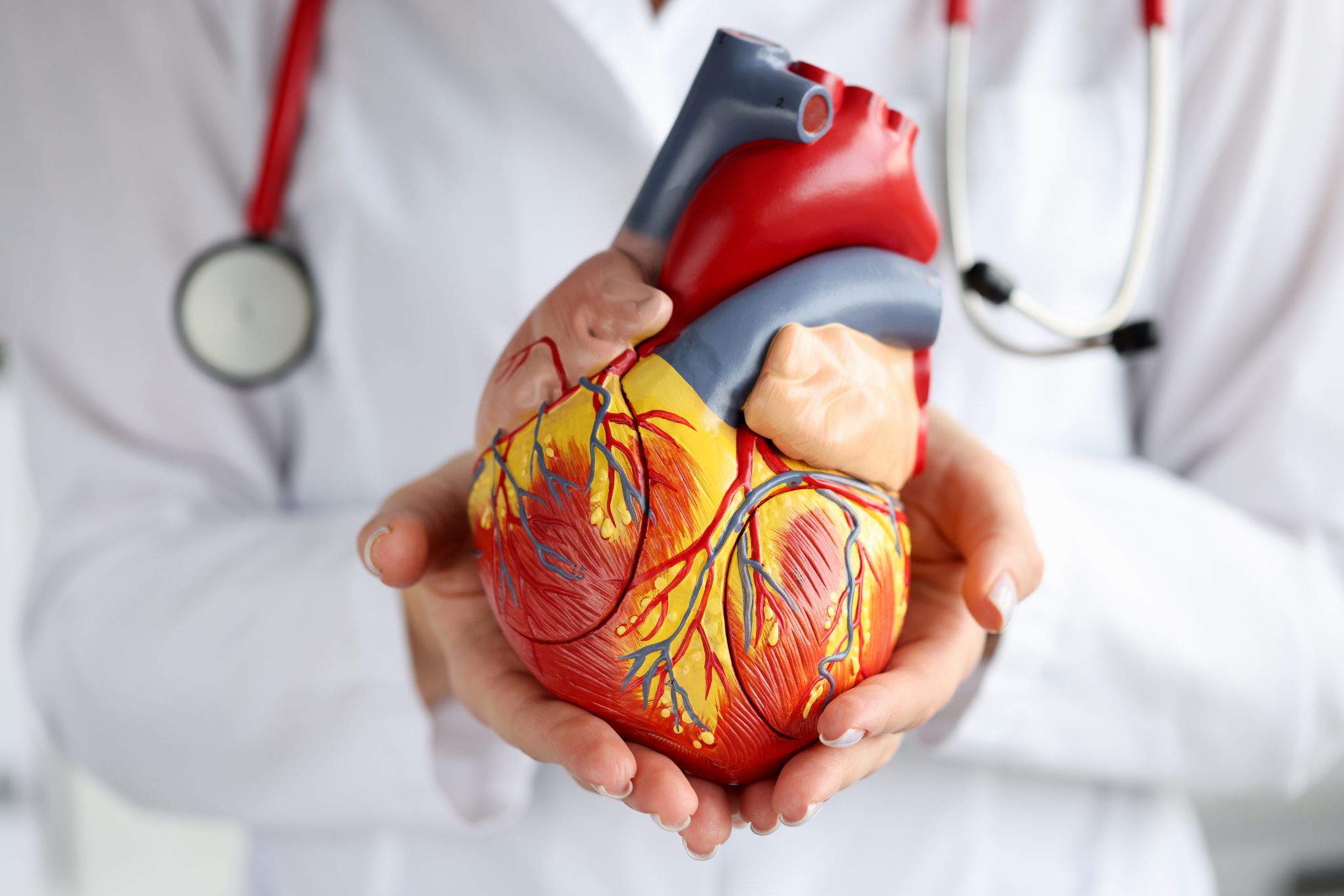
The Heart’s Electrical System: The Conductor of Rhythm
To understand arrhythmias, it’s essential to grasp the basics of the heart’s electrical system. This intricate network of specialized cells generates and conducts electrical impulses throughout the heart muscle, coordinating its contractions.
- Sinoatrial (SA) node: Often called the heart’s natural pacemaker, it initiates each heartbeat.
- Atrioventricular (AV) node: Acts as a relay station, slowing the electrical signal before it reaches the ventricles.
- Bundle of His and Purkinje fibers: Rapidly conduct the electrical impulse to the ventricles, ensuring coordinated contraction.
How does this electrical system control the heart’s pumping action? The process begins when the SA node fires an electrical impulse. This signal spreads through the atria, causing them to contract and push blood into the ventricles. The impulse then travels through the AV node, bundle of His, and Purkinje fibers, triggering ventricular contraction and pumping blood to the lungs and body.

Common Types of Arrhythmias and Their Characteristics
Arrhythmias can be classified based on their origin within the heart and their effect on heart rate. Understanding these distinctions is crucial for accurate diagnosis and appropriate treatment.
Atrial Arrhythmias: Disturbances in the Upper Chambers
Atrial arrhythmias originate in the heart’s upper chambers and include:
- Atrial Fibrillation (AFib): Characterized by rapid, chaotic electrical signals causing the atria to quiver instead of contracting effectively.
- Atrial Flutter: Similar to AFib but with a more organized electrical pattern, resulting in a rapid but regular atrial rhythm.
- Premature Atrial Contractions (PACs): Extra beats originating in the atria that disrupt the normal heart rhythm.
Are atrial arrhythmias always serious? While some atrial arrhythmias can be benign, conditions like AFib can increase the risk of stroke and heart failure if left untreated.
Ventricular Arrhythmias: Disruptions in the Lower Chambers
Ventricular arrhythmias affect the heart’s lower chambers and can be particularly dangerous:

- Ventricular Tachycardia (VT): A rapid heart rhythm originating in the ventricles, potentially leading to cardiac arrest if sustained.
- Ventricular Fibrillation (VF): A chaotic ventricular rhythm that causes the heart to quiver instead of pump, requiring immediate intervention to prevent death.
- Premature Ventricular Contractions (PVCs): Extra beats arising from the ventricles, often felt as “skipped” beats.
Why are ventricular arrhythmias often more concerning than atrial arrhythmias? Ventricular arrhythmias can more quickly lead to a complete loss of effective heart pumping, potentially resulting in sudden cardiac death if not promptly addressed.
The Underlying Causes of Arrhythmias
Arrhythmias can arise from various factors, ranging from structural heart problems to lifestyle influences. Identifying these underlying causes is crucial for effective management and prevention.
Structural and Physiological Factors
Several physical and biological conditions can predispose an individual to arrhythmias:
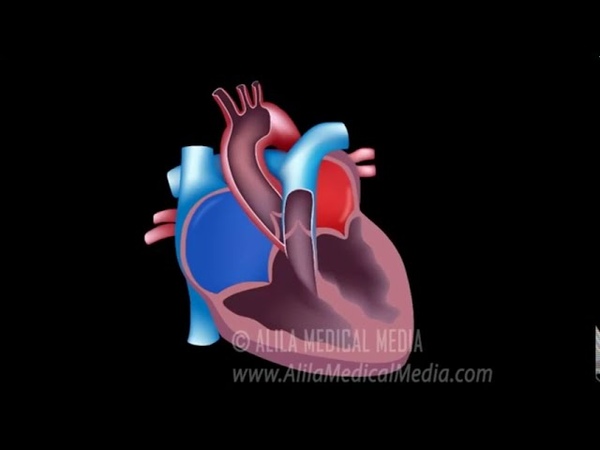
- Coronary artery disease: Reduced blood flow to the heart can damage its electrical system.
- Heart valve disorders: Abnormal valves can strain the heart and disrupt its rhythm.
- Cardiomyopathy: Changes in heart muscle structure can affect electrical conduction.
- Congenital heart defects: Some individuals are born with abnormalities in their heart’s structure or electrical system.
How do these structural issues lead to arrhythmias? Structural changes can create obstacles or alternative pathways for electrical signals, disrupting the heart’s normal conduction pattern.
Lifestyle and Environmental Triggers
Various external factors can trigger or exacerbate arrhythmias:
- Stress and anxiety: Can stimulate the release of hormones that affect heart rhythm.
- Caffeine and alcohol consumption: May irritate the heart and provoke arrhythmias in susceptible individuals.
- Smoking: Nicotine can affect the heart’s electrical system and overall function.
- Lack of sleep: Can disrupt the body’s natural rhythms and stress the cardiovascular system.
Can lifestyle changes help manage arrhythmias? In many cases, modifying these factors can significantly reduce the frequency and severity of arrhythmic episodes.
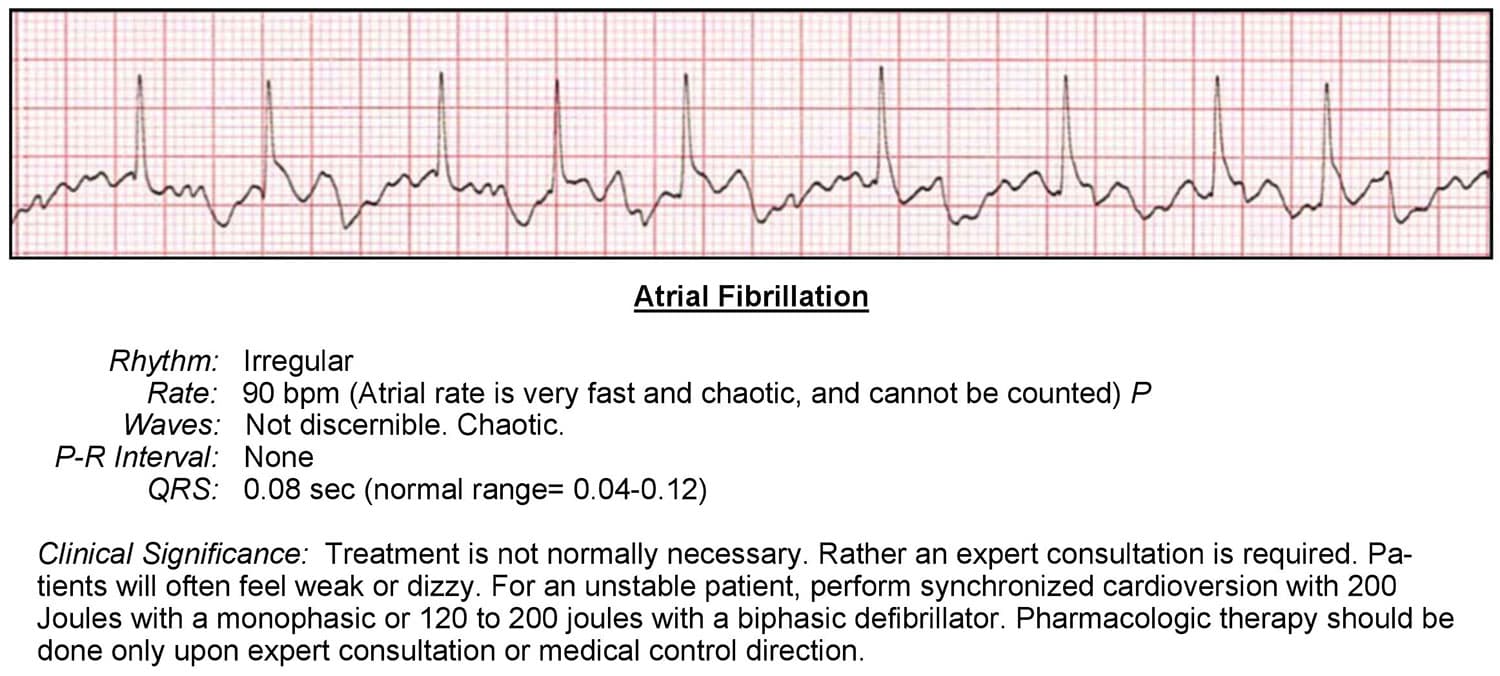
Diagnosing Arrhythmias: Tools and Techniques
Accurate diagnosis of arrhythmias is essential for appropriate treatment. Healthcare providers employ various tools and techniques to detect and characterize abnormal heart rhythms.
Electrocardiography: The Cornerstone of Arrhythmia Diagnosis
Electrocardiography (ECG or EKG) is the primary tool for diagnosing arrhythmias. This non-invasive test records the heart’s electrical activity through electrodes placed on the skin.
- Standard 12-lead ECG: Provides a comprehensive view of the heart’s electrical activity.
- Holter monitor: A portable ECG device worn for 24-48 hours to capture intermittent arrhythmias.
- Event recorder: A longer-term monitoring device activated by the patient when symptoms occur.
Why is continuous monitoring sometimes necessary for diagnosing arrhythmias? Some arrhythmias occur infrequently or unpredictably, making them difficult to capture on a standard ECG.
Advanced Diagnostic Techniques
When standard ECG methods are insufficient, more specialized tests may be employed:
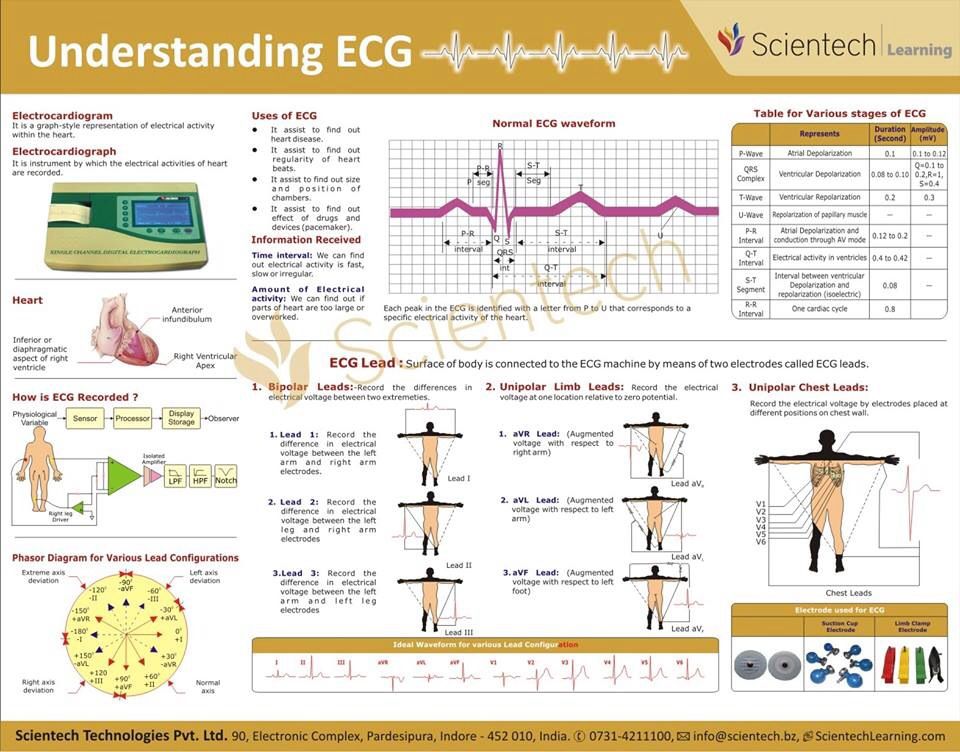
- Electrophysiology study: An invasive procedure that directly measures the heart’s electrical activity.
- Tilt table test: Used to diagnose arrhythmias triggered by changes in body position.
- Cardiac MRI or CT: Can reveal structural abnormalities that may contribute to arrhythmias.
How do these advanced techniques complement standard ECG testing? They provide additional information about the heart’s structure and function, helping to pinpoint the exact cause and location of arrhythmias.
Treatment Approaches for Arrhythmias
The treatment of arrhythmias varies depending on the type, severity, and underlying cause of the condition. A comprehensive approach may involve medications, procedures, and lifestyle modifications.
Pharmacological Interventions
Medications play a crucial role in managing many types of arrhythmias:
- Antiarrhythmic drugs: Work to restore normal heart rhythm.
- Beta-blockers: Can slow rapid heart rates and reduce the heart’s workload.
- Anticoagulants: Used to prevent blood clots in conditions like atrial fibrillation.
How do antiarrhythmic medications work to regulate heart rhythm? These drugs alter the electrical properties of heart tissue, making it less likely to generate or conduct abnormal electrical signals.

Procedural and Surgical Treatments
When medications are insufficient or inappropriate, various procedures may be considered:
- Cardioversion: Uses electrical shocks to reset the heart’s rhythm.
- Catheter ablation: Destroys small areas of heart tissue causing arrhythmias.
- Pacemaker implantation: Provides electrical stimulation to maintain a regular heart rate.
- Implantable cardioverter-defibrillator (ICD): Monitors heart rhythm and delivers shocks to terminate dangerous arrhythmias.
What factors determine the choice between medication and procedural treatments? The decision depends on the type and severity of the arrhythmia, the patient’s overall health, and the potential risks and benefits of each approach.
Living with Arrhythmias: Management and Lifestyle Considerations
For many individuals, living with an arrhythmia requires ongoing management and lifestyle adjustments. Understanding how to cope with the condition and minimize its impact on daily life is crucial.
Lifestyle Modifications for Arrhythmia Management
Several lifestyle changes can help reduce the frequency and severity of arrhythmic episodes:
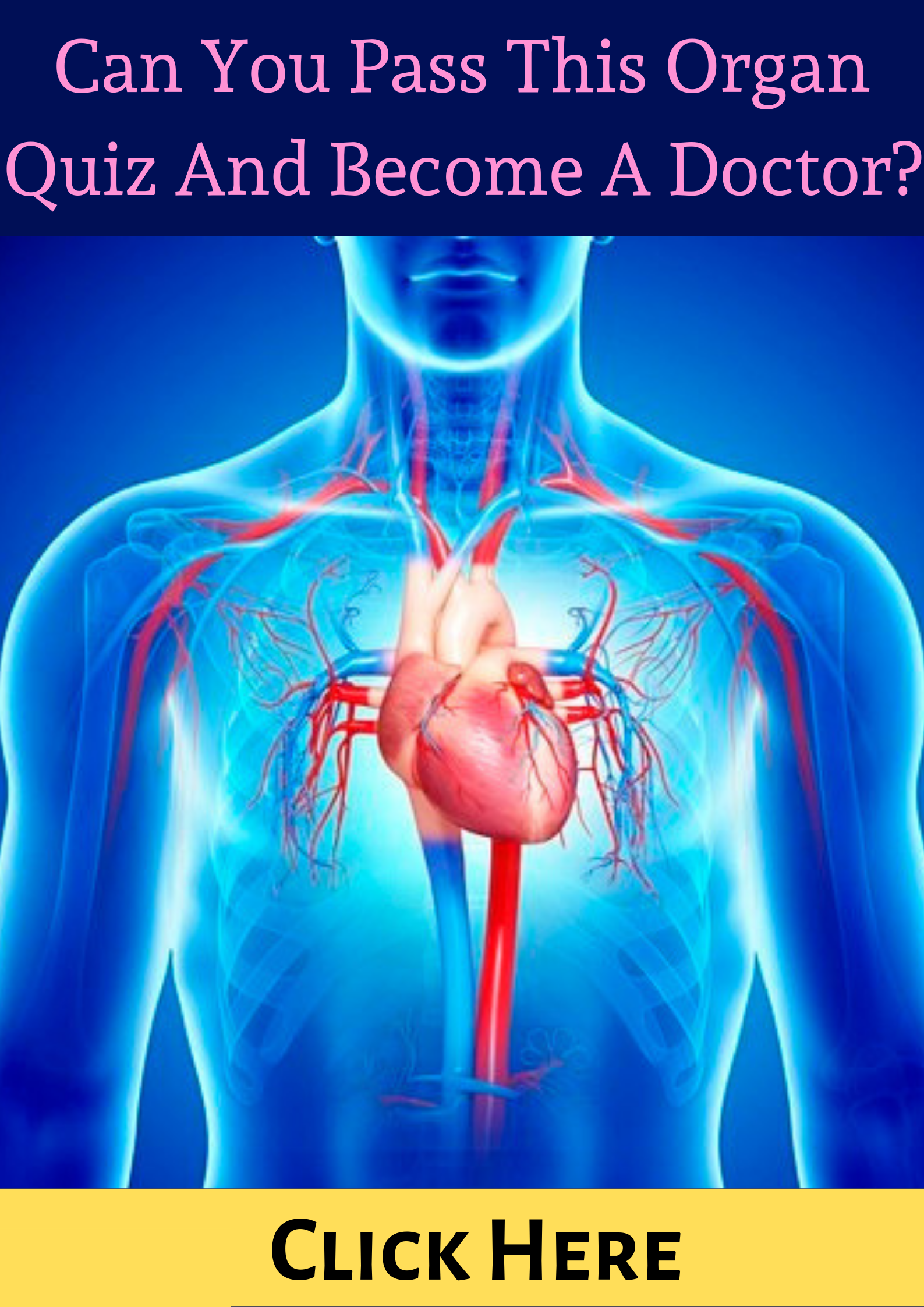
- Stress reduction techniques: Practices like meditation and yoga can help manage stress-induced arrhythmias.
- Regular exercise: Improves overall cardiovascular health but should be done under medical guidance.
- Dietary adjustments: Limiting caffeine, alcohol, and certain foods that may trigger arrhythmias.
- Sleep hygiene: Ensuring adequate, quality sleep to support heart health.
How can patients identify and avoid personal triggers for their arrhythmias? Keeping a detailed journal of activities, diet, and symptoms can help pinpoint specific triggers to avoid.
Monitoring and Follow-up Care
Ongoing medical supervision is essential for individuals with arrhythmias:
- Regular check-ups: Allow for adjustment of treatment plans as needed.
- Home monitoring: Some patients may use personal ECG devices to track their heart rhythm.
- Medication management: Ensuring proper adherence and monitoring for side effects.
Why is consistent follow-up care important for arrhythmia patients? Regular monitoring allows for early detection of changes in the condition and timely adjustments to treatment, potentially preventing complications.

The Future of Arrhythmia Treatment and Research
The field of cardiac electrophysiology is rapidly evolving, with new technologies and treatments continually emerging to improve arrhythmia management.
Emerging Technologies in Arrhythmia Diagnosis and Treatment
Several innovative approaches are showing promise in the field:
- Wearable technology: Advanced smartwatches and patches capable of continuous ECG monitoring.
- Artificial intelligence: Machine learning algorithms to improve arrhythmia detection and classification.
- Gene therapy: Targeting genetic factors contributing to arrhythmias.
- Nanotechnology: Potential for targeted drug delivery and precision interventions.
How might these emerging technologies transform arrhythmia care in the coming years? They have the potential to enable earlier detection, more personalized treatment approaches, and improved long-term outcomes for patients with arrhythmias.
Ongoing Research and Clinical Trials
Numerous studies are underway to advance our understanding and treatment of arrhythmias:
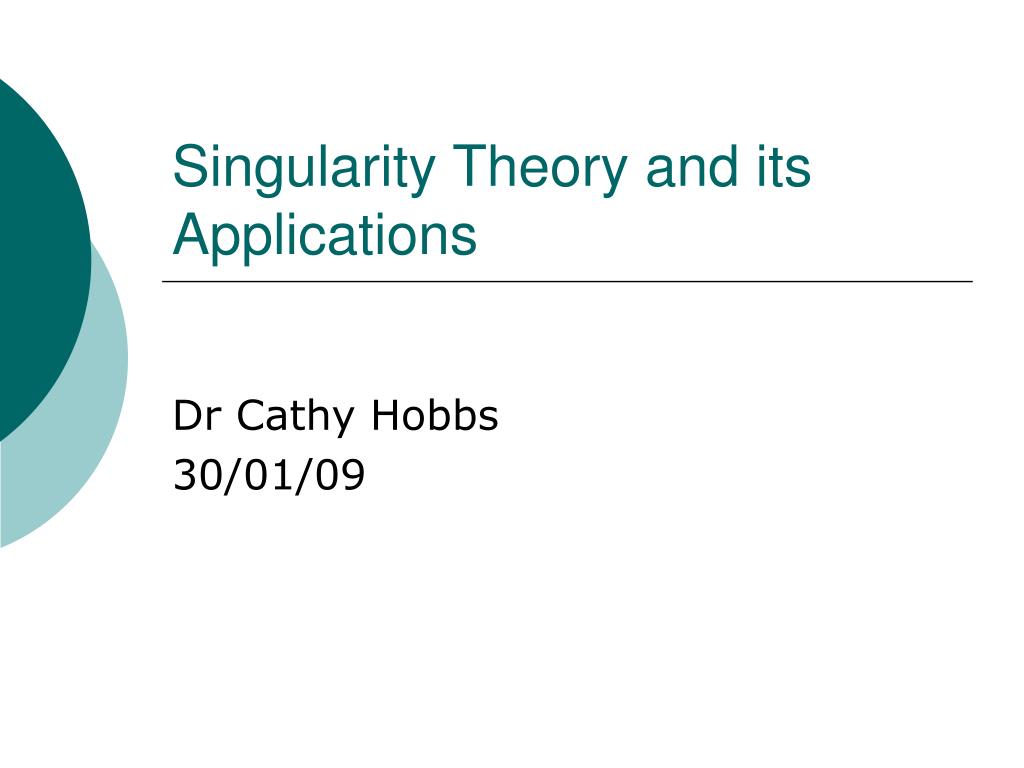
- Novel drug therapies: Investigating new compounds with improved efficacy and fewer side effects.
- Stem cell research: Exploring the potential of regenerative medicine in repairing damaged heart tissue.
- Ablation techniques: Refining and improving minimally invasive procedures for arrhythmia treatment.
What role do clinical trials play in advancing arrhythmia treatment? Clinical trials are essential for evaluating the safety and efficacy of new treatments, ultimately leading to improved care options for patients with arrhythmias.
As our understanding of heart rhythm disorders continues to grow, so too does our ability to effectively diagnose, treat, and manage arrhythmias. With ongoing research and technological advancements, the future holds promise for even better outcomes and quality of life for individuals affected by these complex cardiac conditions.
What is an Arrhythmia? | American Heart Association
The term “arrhythmia” refers to any problem in the rate or rhythm of a person’s heartbeat. During an arrhythmia, the electrical impulses may be too fast, too slow or erratic causing an irregular heartbeat.
When the heart doesn’t beat properly, it can’t pump blood effectively. When this happens, the lungs, brain and all other organs can’t work properly and may shut down or be damaged. View an animation of arrhythmia.
Types of Arrhythmias
- Atrial Fibrillation
- Atrial Flutter
- Bradycardia
- Conduction Disorders
- Premature Contraction
- Tachycardia
- Ventricular Fibrillation
- Other Rhythm Disorders
- Types of Arrhythmias in Children
The normal heart is a strong, muscular pump a little larger than a fist. It pumps blood to all parts of the body.
It pumps blood to all parts of the body.
To understand how the heart pumps, learn about: Structure of the heart
Watch an animation of heart valve anatomy
The heart: four chambers, four valves
The heart has four chambers, two on the right and two on the left:
- Two upper chambers are called atria (one is called an atrium).
- Two lower chambers are called ventricles.
The heart also has four valves that open and close to let blood flow in only one direction when the heart contracts (beats). The four heart valves are:
- Tricuspid valve, located between the right atrium and right ventricle
- Pulmonary or pulmonic valve, between the right ventricle and the pulmonary artery
- Mitral valve, between the left atrium and left ventricle
- Aortic valve, between the left ventricle and the aorta
Each valve has a set of flaps (also called leaflets or cusps). The mitral valve has two flaps; the others have three. Blood flow occurs only when there’s a difference in pressure across the valves, which causes them to open. Under normal conditions, the valves allow blood to flow in only one direction.
The mitral valve has two flaps; the others have three. Blood flow occurs only when there’s a difference in pressure across the valves, which causes them to open. Under normal conditions, the valves allow blood to flow in only one direction.
The heart pumps blood to the lungs and to all the body’s tissues by a sequence of highly organized contractions of the four chambers. For the heart to function properly, the four chambers must beat in an organized way.
Electrical system of the heart
Electrical signals control the pump
The heart beat (contraction) begins when an electrical impulse from the sinus node (also called SA node) moves through the heart’s muscle tissue. The SA node is sometimes referred to as the heart’s “natural pacemaker” because it starts the impulses for the heartbeat.
The normal electrical sequence begins in the right atrium and spreads throughout the atria to the atrioventricular (AV) node. From the AV node, electrical impulses travel down the Bundle of His and through the Purkinje fibers causing the ventricles to contract.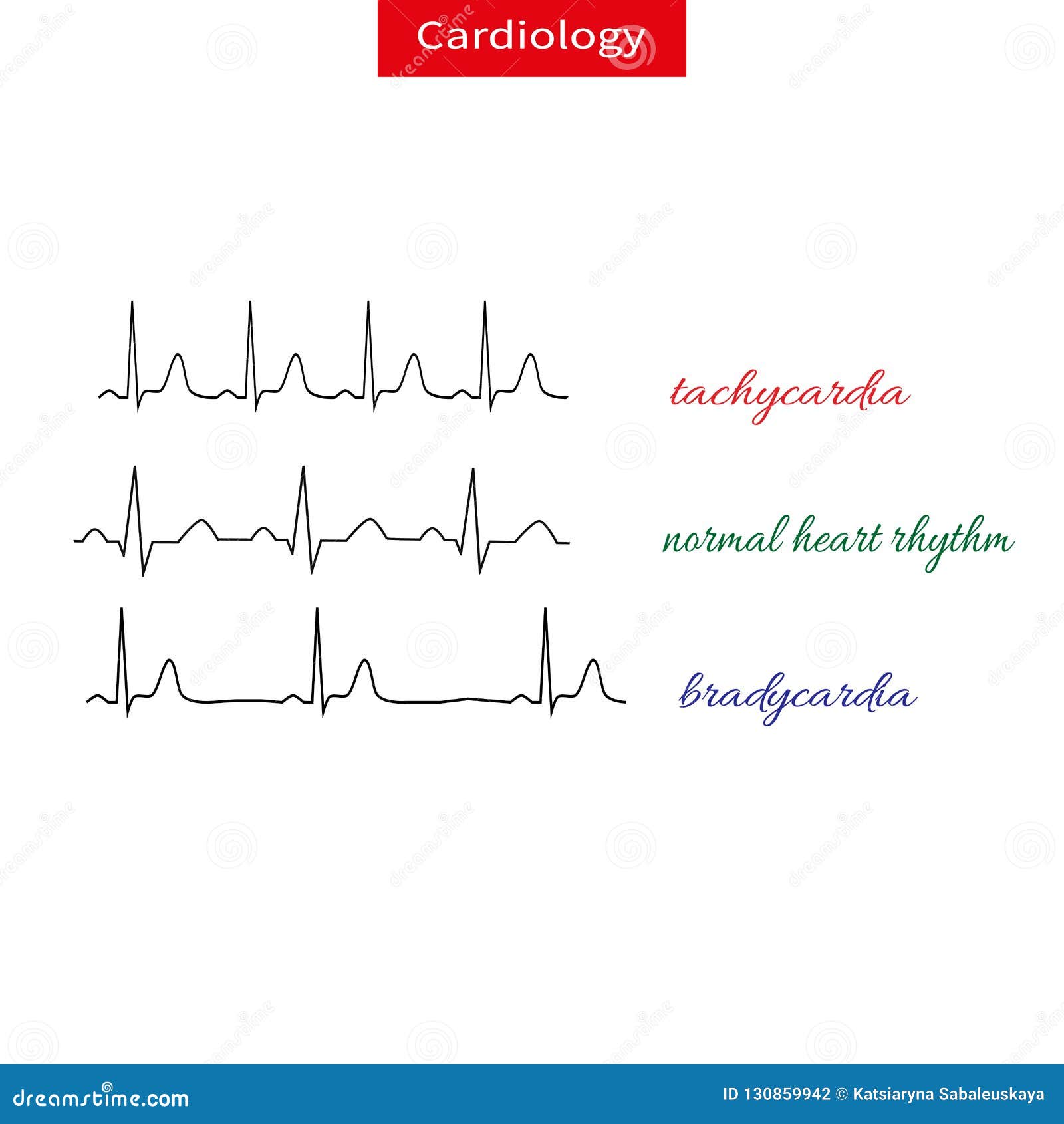
The normal heart beats in a regular manner because electrical impulses cause a sequence of organized contractions. In an adult, a normal heart beats 60 to 100 times a minute.
Electrocardiography (ECG or EKG) is a simple, painless procedure that records the heart’s electrical activity and can help diagnose arrhythmias (abnormal heart rhythms).
Abnormal heart rhythms (arrhythmias)
Arrhythmias are abnormal heartbeats. The term “arrhythmia” refers to any change from the normal sequence of electrical impulses.
Some arrhythmias are so brief (such as a temporary pause or premature beat) the overall heart rate or rhythm isn’t greatly affected. But if arrhythmias last longer, they may make the heart rate too slow, too fast or erratic so the heart pumps less effectively.
- A fast heart rate (in adults, more than 100 beats per minute) is called tachycardia.
- A slow heart rate (less than 60 beats per minute) is referred to as bradycardia.

Causes
Normally, the heart’s most rapidly firing cells are in the sinus node, making that area a natural pacemaker. Under some conditions, almost all heart tissue can start an impulse of the type that can generate a heartbeat.
- Cells in the heart’s conduction system can fire automatically and start electrical activity. This activity can interrupt the normal order of the heart’s pumping activity.
- Secondary pacemakers elsewhere in the heart provide a “back-up” rhythm when the sinus node doesn’t work properly or when impulses are blocked somewhere in the conduction system.
Arrhythmias can be caused by:
- A delay or blockage of the electrical signals that control the heartbeat.
- Another part of the heart taking over as pacemaker.
- Changes to heart tissue cause by changes in blood flow, damage to the heart’s electrical system or stiffening or scarring of the heart tissue.
- Excessive exertion, strain or stress.

- An imbalance of fluids, hormones or electrolytes in the blood.
- Certain heart medications.
An arrhythmia occurs when:
- The heart’s natural pacemaker develops an abnormal rate or rhythm.
- The normal conduction pathway is interrupted or changed.
- Another part of the heart takes over as pacemaker.
Written by American Heart Association editorial staff and reviewed by science and medicine advisors. See our editorial policies and staff.
Last Reviewed: Nov 11, 2022
Heart Rhythm and Arrythmias | The Johns Hopkins Heart and Vascular Institute
Heart arrhythmias, or irregular heartbeats, occur when the heart’s electrical system is out of synch and disorganized. Like a novice drummer, with arrhythmias your heart can beat too fast, too slow or irregularly. Arrhythmias are important because they can cause sudden cardiac death, strokes and their aftereffects.
The Johns Hopkins Arrhythmia Service is composed of faculty who are working hard to combat cardiac arrhythmias. The arrhythmia team is working on a large portfolio of arrhythmia research projects. They do this through basic research and genetic studies to understand the fundamental causes of arrhythmias. They are also working on new approaches to treat cardiac arrhythmias — with medications, catheter ablation and implantable devices.
One important area of research is on arrhythmogenic right ventricular cardiomyopathy (ARVC). This inherited disorder is a common cause of sudden cardiac death in young people. Johns Hopkins has the largest team of researchers and collaborators working to combat this disease. The ARVD Precision Center of Excellence conducts research that involves studies in mouse models of the disease and clinical trials using a large national registry of patients with this condition, as well as genetic testing and analysis.
Another area of research focus is on atrial fibrillation. Atrial fibrillation is the most common arrhythmia in the world and is a contributing cause of strokes. Researchers are focused on ways to improve care for patients with atrial fibrillation. They established a registry of patients who have undergone ablation for atrial fibrillation, and have collected data for over 2000 patients over the last 15 years. Johns Hopkins researchers are also working to develop new techniques for treatment including catheter ablation. Catheter ablation involves passing a small wire from the leg into the heart and cauterizing or freezing the areas that cause atrial fibrillation. In addition to this, the Johns Hopkins team is developing methods to lower stroke risk without use of anti-blood clotting medications.
Atrial fibrillation is the most common arrhythmia in the world and is a contributing cause of strokes. Researchers are focused on ways to improve care for patients with atrial fibrillation. They established a registry of patients who have undergone ablation for atrial fibrillation, and have collected data for over 2000 patients over the last 15 years. Johns Hopkins researchers are also working to develop new techniques for treatment including catheter ablation. Catheter ablation involves passing a small wire from the leg into the heart and cauterizing or freezing the areas that cause atrial fibrillation. In addition to this, the Johns Hopkins team is developing methods to lower stroke risk without use of anti-blood clotting medications.
Johns Hopkins arrhythmia experts are also working on ventricular arrhythmias. These arrhythmias arise in the lower chamber of the heart and are a common cause of sudden cardiac death. The researchers are working on new approaches to use catheter ablation to control these arrhythmias.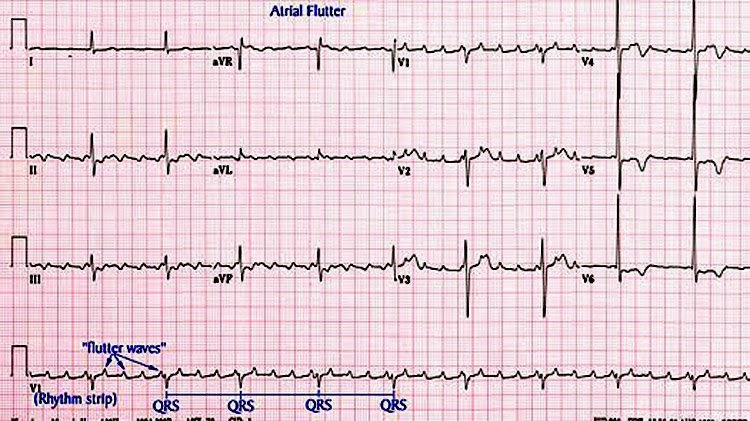 They also have large research efforts focused on identifying which patients are most susceptible to a cardiac arrest. This is important as these patients may benefit from placement of an implantable defibrillator.
They also have large research efforts focused on identifying which patients are most susceptible to a cardiac arrest. This is important as these patients may benefit from placement of an implantable defibrillator.
Explore More Research Labs & Centers
Learn more about our laboratories and centers involved in various aspects of cardiovascular research.
View labs and centersAnderson LabARVD ProgramHeart and Vascular InstituteHCM ServiceTomaselli Lab
Learn more Cardiovascular Research
Our faculty and fellows continue to make ground-breaking discoveries for cardiovascular diseases, learn more about cardiovascular research at Johns Hopkins.
Learn more
back to top button
Heart rhythm – norm and pathology – clinic “Family Doctor”.
Arrhythmia or heart rhythm disturbance is a common cardiac pathology in both adults and children. What characteristics of the heart rhythm does the doctor evaluate in order to distinguish the norm from the pathology?
What characteristics of the heart rhythm does the doctor evaluate in order to distinguish the norm from the pathology?
1. Heart rate (HR)
An increase in heart rate is called tachycardia , slowdown – bradycardia . There are rules for every age. For example, a heart rate of 140 beats per minute for an adult is a pronounced tachycardia, while for a baby of the first year of life, this is the absolute norm.
2. Heart rate
In fact, rhythm is determined by the variability (difference) in the intervals between heartbeats. For example, for the second hand, the interval between “steps” is always the same and equal to 1 second. For the heart, such accuracy is not typical; there are always small differences in the duration of cardiac cycles. If the intervals between heartbeats differ significantly from each other, we say that the pulse is not rhythmic or there is an arrhythmia.
It should be said right away that “rhythmism” and heart rate are highly dependent on the nervous system, respiration (especially in children), physical activity, hormones, and body temperature.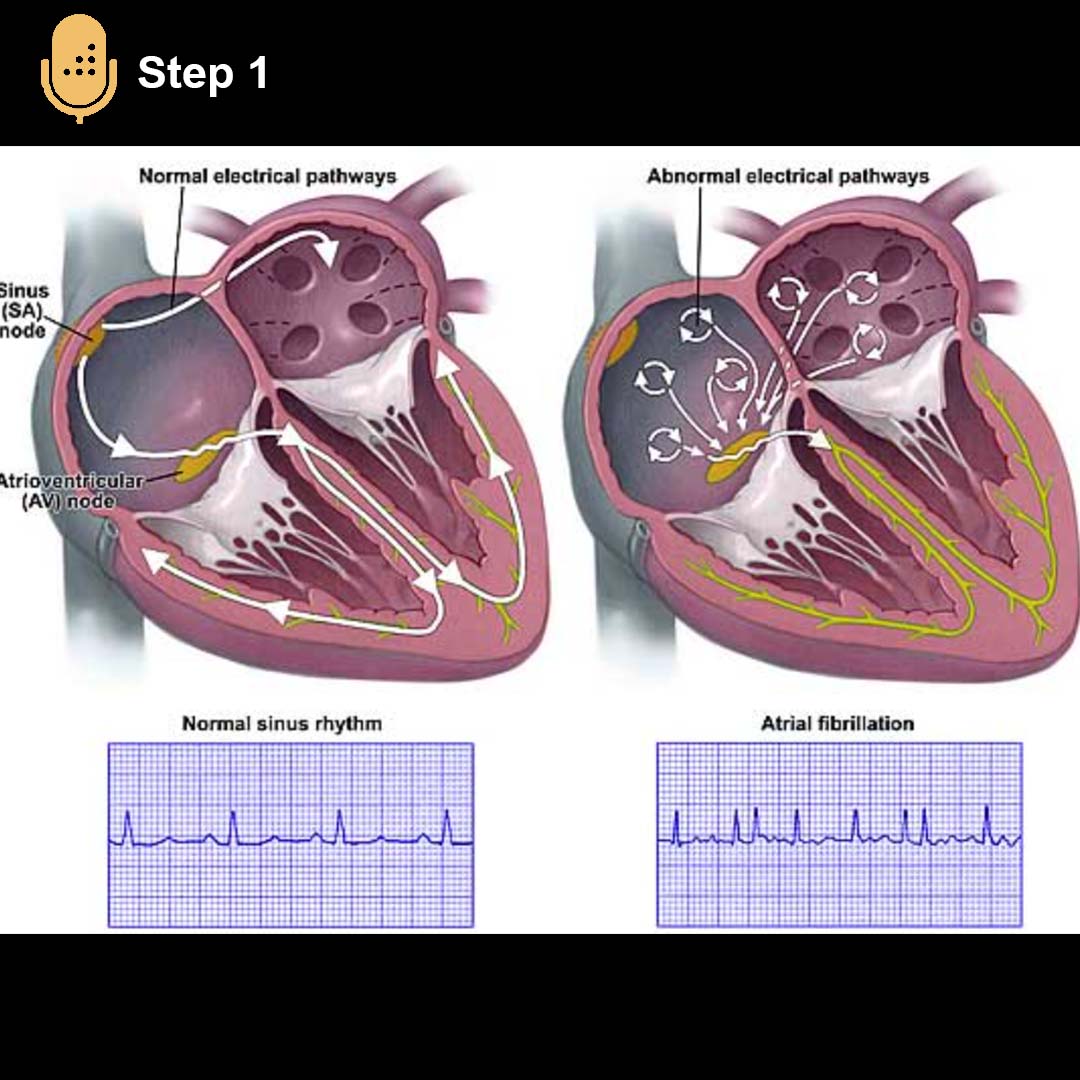
The doctor can “listen” to the heart rate and the correctness of the rhythm when examining the patient. For a more accurate diagnosis, electrocardiography (ECG) is performed.
3. Source or pacemaker
There are areas in the heart that normally generate electrical impulses at a certain frequency, leading to a contraction of the heart muscle. Such a “legitimate” pulse generator is the sinus node, located in the right atrium. In case of its damage or dysfunction, the role of the “driver” of the rhythm is taken over by other parts of the heart. This rhythm is called ectopic or more precisely localized – atrial / nodal / ventricular.
Often, the sinus rhythm remains the main rhythm, but impulses from other pathological “drivers” are wedged into it. Such impulses are called extrasystoles . They cause an extraordinary contraction of the heart and can be felt as a sudden beat or sinking of the heart in the chest.
Patients, especially children, do not always notice extrasystoles, and this rhythm disturbance can only be detected with auscultation and ECG.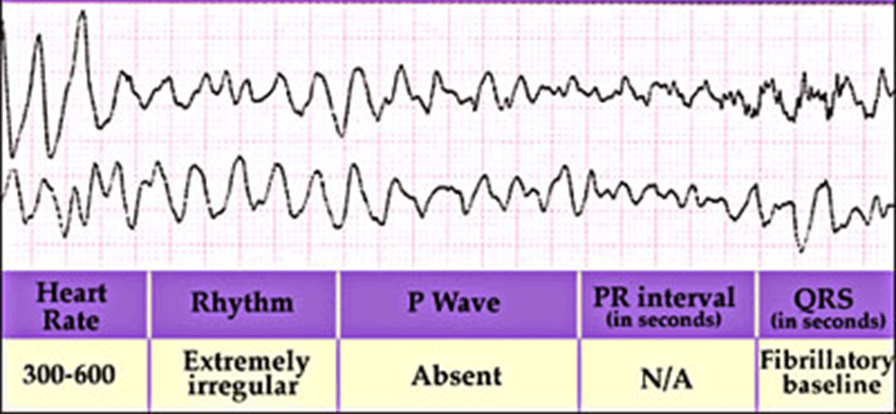
4. Conductivity
Conduction refers to the rate of transmission of an electrical impulse from the pacemaker to other parts of the heart. If this speed is slowed down or there is no conduction at all, such a violation is called blockade . Sometimes additional pathways are formed, which leads to paroxysmal (paroxysmal) tachycardia. These paths, according to indications, have to be stopped surgically by radiofrequency or cryoablation.
Usually, at rest, a person does not feel how his heart works. With excitement and physical activity, the force of contractions and heart rate increase. Then we notice an accelerated heartbeat, which quickly passes at rest.
Feeling a heartbeat for no apparent reason, “interruptions”, a feeling of a “pause” in the work of the heart, fainting – a serious reason for a cardiological examination.
Prepared information for you:
Artemenko Olga Igorevna – cardiologist, Ph. D.
D.
Conducts a reception in the children’s building on Usacheva
Return to the list of publications
Physicians
About doctor Record
Artemenko Olga Igorevna
pediatric cardiologist, Ph.D.
Children’s building on Usacheva
- 24-hour Holter ECG monitoring
- cardiomyopathy
- Arrhythmia (abnormal heart rhythm)
- atherosclerotic heart disease
- Secondary arterial hypertension
- Dispensary observation of patients undergoing heart surgery
- Ischemic heart disease (CHD)
- Intraventricular conduction disorders
- Determining the risk of cardiovascular disease
- Heart disease
- Rehabilitation after myocardial infarction
- Heart failure
- Ambulatory blood pressure monitoring
- Daily ECG monitoring for children
- Ultrasound of the heart (EchoCG)
- Essential hypertension
What is heart rhythm and arrhythmias |
Normal heart rhythm
The human heart is relatively small compared to the work it does.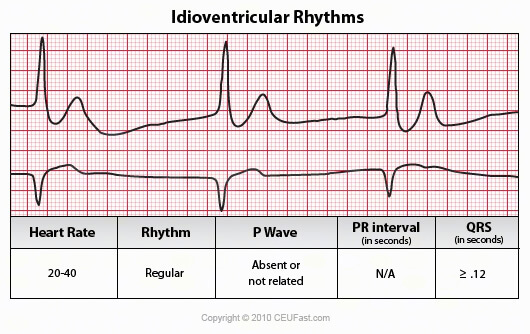 It pumps through the vessels an average of 4.7 liters of blood every minute, or 282 liters every hour, supplying organs and tissues with oxygen. Violations of the frequency, rhythm and sequence of excitation and contraction of the heart are called cardiac arrhythmia.
It pumps through the vessels an average of 4.7 liters of blood every minute, or 282 liters every hour, supplying organs and tissues with oxygen. Violations of the frequency, rhythm and sequence of excitation and contraction of the heart are called cardiac arrhythmia.
The heart has two upper chambers, the atria, and two lower chambers, the ventricles. The atrium pumps blood to the ventricles, then the right ventricle pumps blood to the lungs, while the left ventricle supplies blood to all organs of the body. Rhythmic contractions of the heart occur due to electrical impulses coming from the “natural stimulator” – the sinoatrial node. Each impulse travels through the atria to the atrioventricular (atrioventricular) node, and then to the ventricles. After the contraction, there is a pause until the next impulse, during which the heart “rests”. The normal heart rate is 60 – 80 beats per minute at rest, with increased activity, the rate of contractions increases.
Cardiac arrhythmia and its symptoms
Cardiac arrhythmia (Greek: arrhythmia no rhythm, irregularity)
If the heart beats too fast normal activity of the heart may be violated.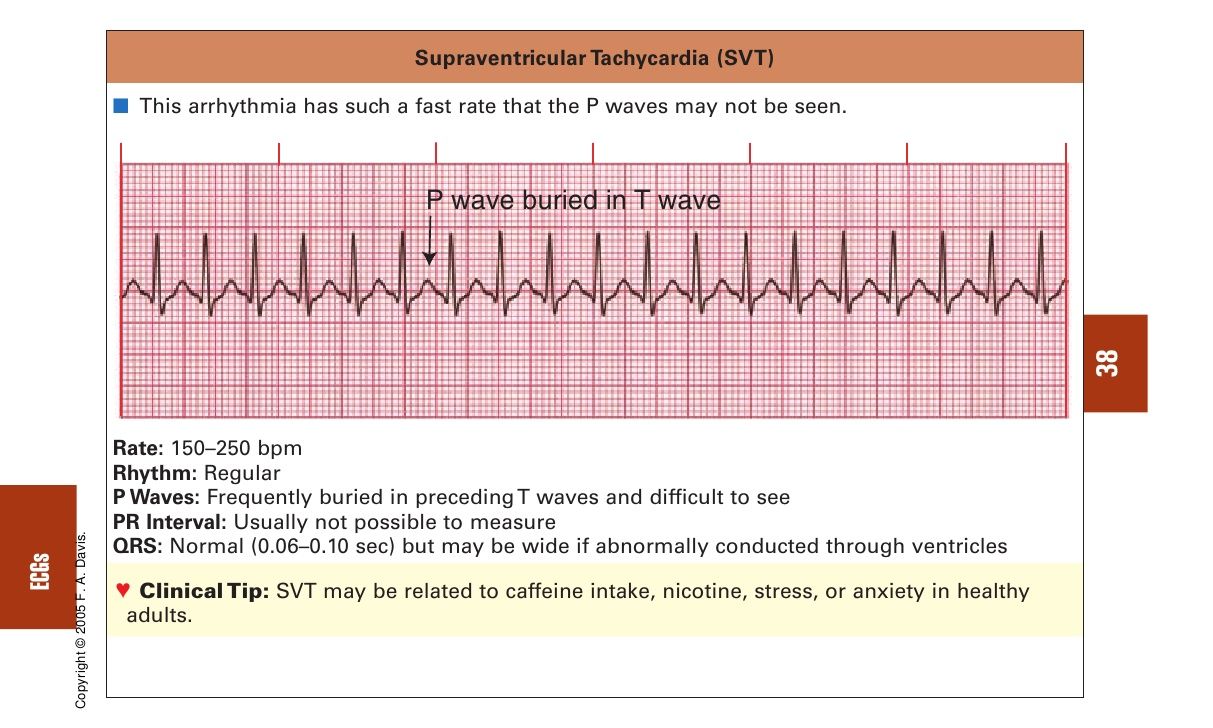 There is an arrhythmia of the heart. Excessively fast heartbeats are called tachyarrhythmias. One type of tachyarrhythmia is ventricular tachycardia, in which electrical impulses originate in the ventricles of the heart.
There is an arrhythmia of the heart. Excessively fast heartbeats are called tachyarrhythmias. One type of tachyarrhythmia is ventricular tachycardia, in which electrical impulses originate in the ventricles of the heart.
Ventricular tachycardia is a life-threatening arrhythmia. With excessively frequent contractions, the ventricles of the heart do not have time to fill with a sufficient amount of blood. As a result, insufficient amounts of blood enter the organs, including the brain. In this case, in addition to the heartbeat, weakness, dizziness, and loss of consciousness may be felt.
Chaotic unstable contractions of muscle fibers are called fibrillation, which, in turn, leads to cardiac arrest. This is the most dangerous complication of ventricular tachycardia, which requires immediate resuscitation. Cardiac arrest usually occurs suddenly. To restore a normal heart rhythm, you must immediately perform defibrillation – an electrical impulse that restores a normal heart rhythm.